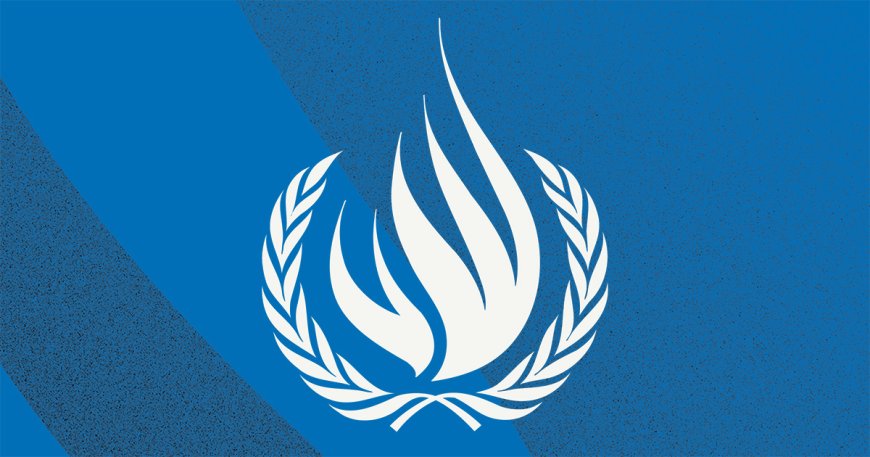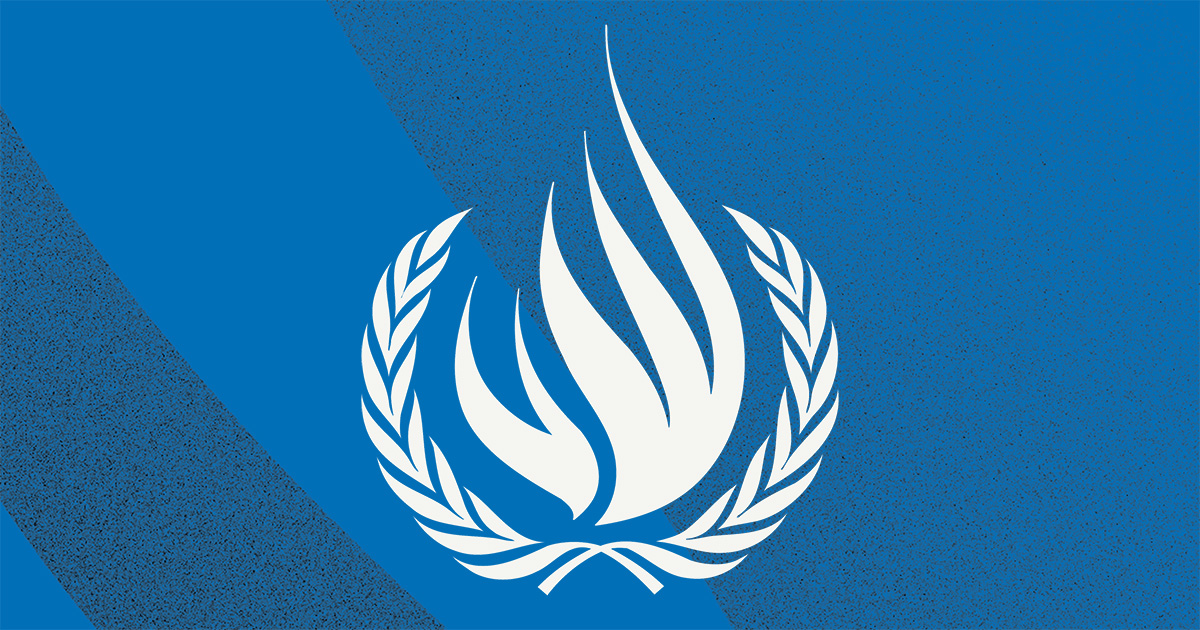Special Rapporteur on the Human Rights to Safe Drinking Water and Sanitation: It is Critical to Initiate Discussions to Explore the Inclusion of the Contamination of Aquatic Ecosystems as a Crime against Humanity
Special Rapporteur on the Human Rights to Safe Drinking Water ... OHCHR


Pedro Arrojo-Agudo: Over-Exploitation and Contamination of Aquatic Ecosystems Breaking Human Rights
Pedro Arrojo-Agudo, the Special Rapporteur on the human rights to safe drinking water and sanitation, addressed the Human Rights Council and emphasized that over-exploitation, land grabbing, and contamination were not only threatening the sustainability of the world’s aquatic ecosystems but also violating the human rights of the most impoverished individuals. He stressed the need for international discussions to consider including the contamination of aquatic ecosystems as crimes against humanity in the Rome Statute. Arrojo-Agudo highlighted the paradoxical crisis on Planet Water, with 2 billion people lacking access to safe drinking water, and called for a new model of environmental regeneration based on sustainability and a human rights approach to water governance.
Contamination of Aquatic Ecosystems
- Heavy metals and toxins from legal and illegal mining activities are causing the contamination of aquatic ecosystems on all continents.
- Mining discharges over 180 million tonnes of highly toxic waste into rivers annually, poisoning millions of people.
- Discussions at the international level should explore including these actions as crimes against humanity in the Rome Statute.
- The crime of ecocide should be approved and regulated to address massive pollution.
Unsustainable Growth of Irrigation
- Irrigation practices, including over-exploitation of aquifers and toxic contamination by pesticides, are threatening the sustainability of ecosystems.
- Millions of people are left without drinking water, and aquifers as strategic reserves are being ruined.
- Privatization of water contributes to the bankruptcy of ecosystem sustainability and affects the human rights of the most impoverished.
- Climate change exacerbates the challenges faced by aquatic ecosystems.
During his visits to Peru and Tunisia, Arrojo-Agudo observed alarming vulnerabilities to climate change and massive toxic pollution of waters by heavy metals. He recommended measures such as implementing legislation to protect river headwaters, preventing overexploitation of aquifers, and imposing a moratorium on new mining concessions in river headwaters in Peru. In Tunisia, he emphasized the need to prioritize drinking water over productive uses, especially in rural areas, and improve water quality and access to sanitation.
Discussion and Statements
During the discussion, speakers acknowledged access to safe and clean drinking water and sanitation as human rights. They emphasized the importance of water in ensuring access to food and health for all, particularly vulnerable populations. The Special Rapporteur’s vision highlighted the lack of a sustainable development model as the root cause of the water crisis. Pollution, over-exploitation, and mismanagement of freshwater were identified as key factors contributing to the ongoing water and sanitation crises. Climate change, droughts, floods, and other risks affecting ecosystems were also recognized as challenges that require resilience-building measures.
Speakers called for democratic water governance based on a human rights approach and stressed the need for international cooperation in managing cross-border waters. They highlighted the disproportionate burden faced by certain groups, including small island developing states and women and girls, in relation to water and sanitation. The importance of addressing industrial pollution while ensuring livelihoods and economies was emphasized. Access to safe drinking water was identified as a key element for health and peace.
Conclusion
The Special Rapporteur expressed gratitude for the attention given to the reports and the interest shown by Member States. He highlighted the need to strengthen the resilience of aquatic systems to minimize risks to human drinking water and sanitation. He called for global discussions on toxic contamination of rivers and aquifers, the definition of ecocide as a crime against humanity, and immediate action to prevent the poisoning of millions, especially children. Arrojo-Agudo assured Member States that his reports were based on extensive interviews, data analysis, and engagement with civil society organizations.
SDGs, Targets, and Indicators
1. Which SDGs are addressed or connected to the issues highlighted in the article?
- SDG 6: Clean Water and Sanitation
- SDG 13: Climate Action
- SDG 15: Life on Land
2. What specific targets under those SDGs can be identified based on the article’s content?
- SDG 6.3: By 2030, improve water quality by reducing pollution, eliminating dumping and minimizing release of hazardous chemicals and materials, halving the proportion of untreated wastewater and substantially increasing recycling and safe reuse globally.
- SDG 6.4: By 2030, substantially increase water-use efficiency across all sectors and ensure sustainable withdrawals and supply of freshwater to address water scarcity and substantially reduce the number of people suffering from water scarcity.
- SDG 13.1: Strengthen resilience and adaptive capacity to climate-related hazards and natural disasters in all countries.
- SDG 15.1: By 2020, ensure the conservation, restoration and sustainable use of terrestrial and inland freshwater ecosystems and their services, in particular forests, wetlands, mountains and drylands, in line with obligations under international agreements.
3. Are there any indicators mentioned or implied in the article that can be used to measure progress towards the identified targets?
Yes, the article mentions several indicators that can be used to measure progress towards the identified targets:
- Contamination of aquatic ecosystems by heavy metals and other toxins generated by mining and production activities.
- Discharge of highly toxic waste into rivers by mining, resulting in the poisoning of millions of people.
- Unsustainable growth of irrigation, leading to over-exploitation of aquifers and toxic contamination by pesticides.
- Privatization of water, which affects the sustainability of ecosystems and the human rights of the most impoverished.
- Climate change, contributing to the breaking of the sustainability of aquatic ecosystems.
SDGs, Targets, and Indicators Table
| SDGs | Targets | Indicators |
|---|---|---|
| SDG 6: Clean Water and Sanitation | 6.3: Improve water quality | – Contamination of aquatic ecosystems by heavy metals and toxins – Discharge of highly toxic waste into rivers |
| SDG 6: Clean Water and Sanitation | 6.4: Increase water-use efficiency | – Unsustainable growth of irrigation – Over-exploitation of aquifers and toxic contamination by pesticides |
| SDG 6: Clean Water and Sanitation | 6.4: Increase water-use efficiency | – Privatization of water affecting sustainability of ecosystems and human rights |
| SDG 13: Climate Action | 13.1: Strengthen resilience to climate-related hazards | – Climate change contributing to breaking the sustainability of aquatic ecosystems |
| SDG 15: Life on Land | 15.1: Ensure conservation and sustainable use of terrestrial and inland freshwater ecosystems | – Contamination and over-exploitation of aquatic ecosystems |
Behold! This splendid article springs forth from the wellspring of knowledge, shaped by a wondrous proprietary AI technology that delved into a vast ocean of data, illuminating the path towards the Sustainable Development Goals. Remember that all rights are reserved by SDG Investors LLC, empowering us to champion progress together.
Source: ohchr.org

Join us, as fellow seekers of change, on a transformative journey at https://sdgtalks.ai/welcome, where you can become a member and actively contribute to shaping a brighter future.







